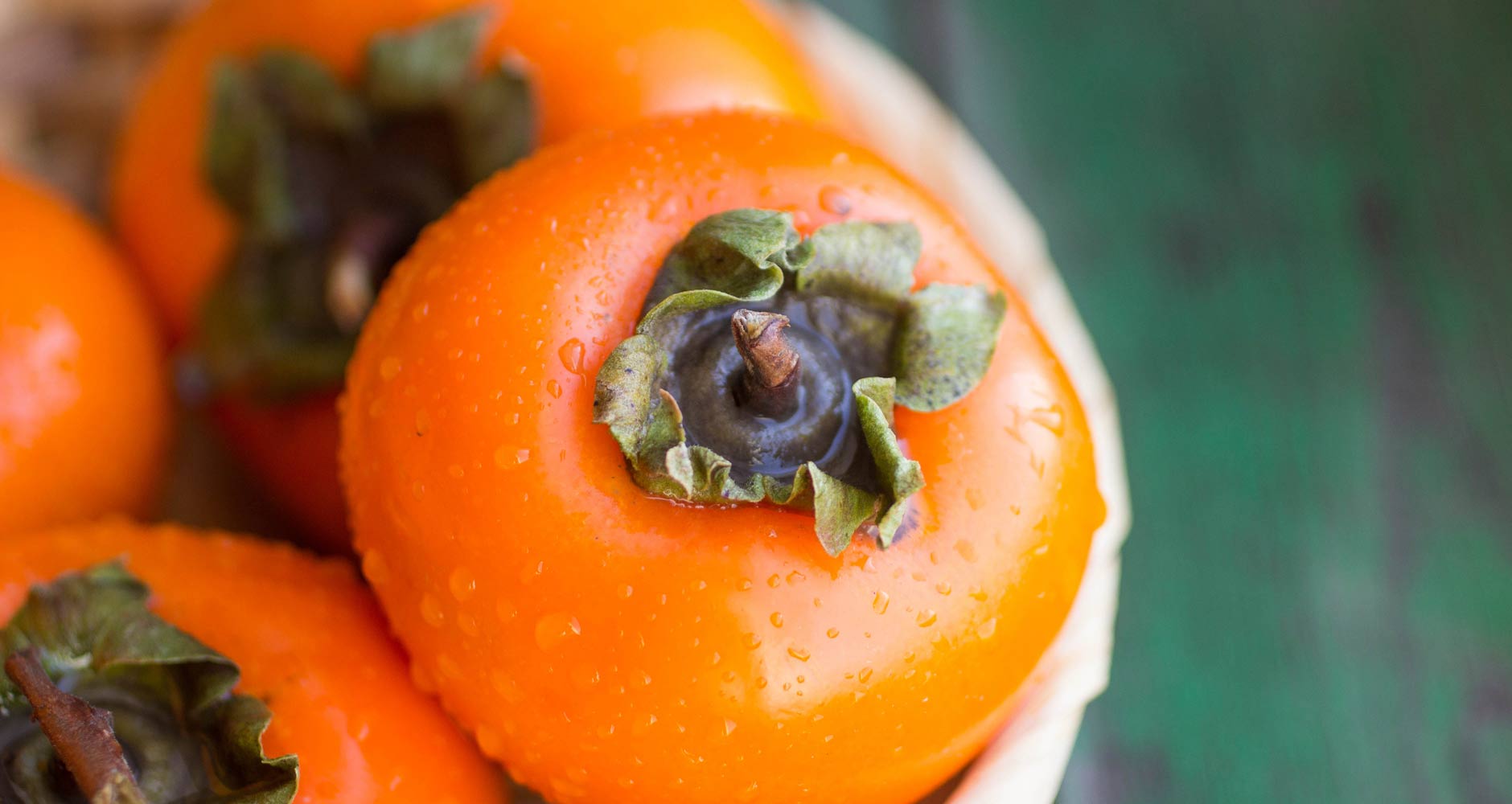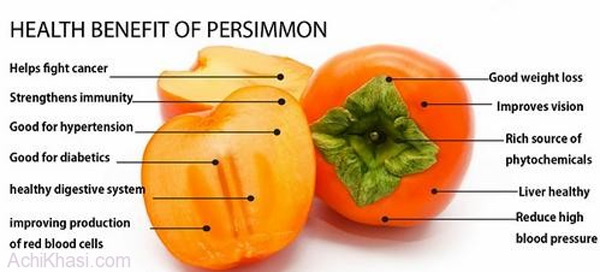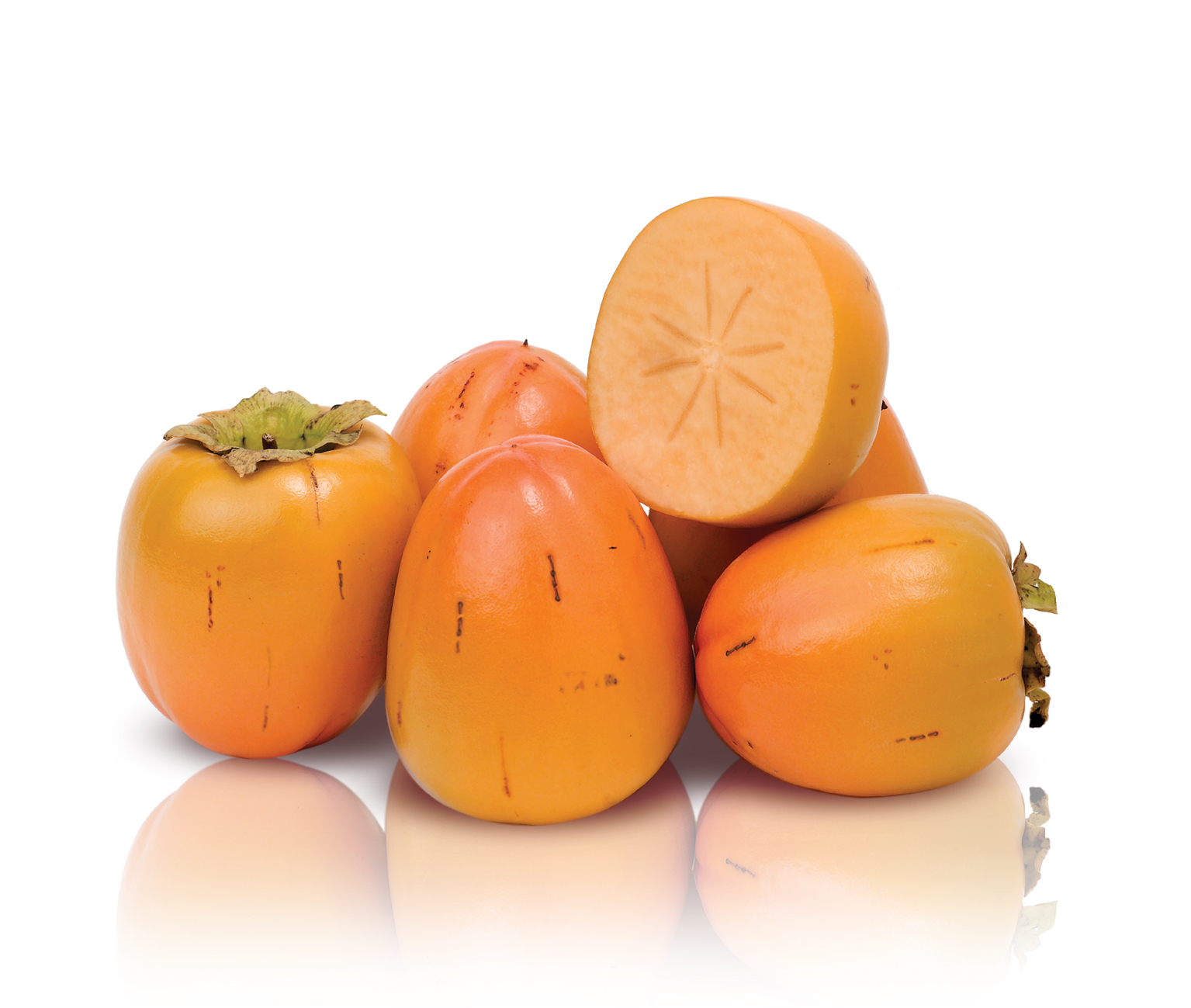
Persimmon fruit is a golden yellow, round or oval, flavorful, smooth textured delicacy from far East Asian origin. Its sweet, delicious flesh is packed with several health promoting nutrients such as vitamins, minerals, and anti-oxidants vital for optimum health.
Botanically, persimmons belong to the family of Ebenaceae, in the genus: Diospyros. This delicate fruit is native to China. From China, tt spread to Korean peninsula and Japan very long time ago, and later was introduced to California during the middle of the 19th century.
The word Diospyros comes from the ancient Greek words “dios” and “pyron”. A popular etymology construed this as “divine fruit”, or as meaning “wheat of Zeus” or “God’s pear” and “Jove’s fire”.
The heart-shaped Hachiya is the most common variety of astringent persimmon. Astringent persimmons contain very high levels of soluble tannins and are unpalatable if eaten before completely softened.
Persimmons are eaten fresh, dried, raw, or cooked. When eaten fresh, they are usually eaten whole like an apple or cut into quarters, though with some varieties, it is best to peel the skin first. One way to consume very ripe persimmons, which can have a very soft texture, is to remove the top leaf with a paring knife and scoop out the flesh with a spoon.
Compared to apples, persimmons have higher levels of dietary fiber, sodium, potassium, magnesium, calcium, iron and manganese, but lower levels of copper and zinc. They also contain vitamin C and provitamin A beta-carotene.
Health benefits of Persimmon Fruit
Persimmon fruit is moderately high in calories (provides 70 calories/100 g) but very low in fats. Its smooth textured flesh is a very good source of dietary fiber. 100 g of fresh fruit holds 3.6 g or 9.5% of recommended daily intake of soluble and insoluble fiber.

Persimmons contain health benefiting flavonoid poly-phenolic anti-oxidants such as catechins and gallocatechins in addition to having an important anti-tumor compound, betulinic acid. Catechins found to have anti-infective, anti-inflammatory and anti-hemorrhagic (prevents bleeding from small blood vessels) properties.
Some of other anti-oxidant compounds found abundantly in this fruit are vitamin-A, beta-carotene, lycopene, lutein, zea-xanthin and cryptoxanthin. Together, these compounds work as protective scavengers against oxygen-derived free radicals and reactive oxygen species (ROS) that play a role in aging and various disease processes.
Zea-xanthin, an important dietary carotenoid, is selectively absorbed into the retinal macula lutea in the eyes where it thought to provide antioxidant and protective light-filtering functions. It, thus, helps prevent “Age-related macular related macular disease”(ARMD) in the elderly.
Persimmons are also a very good source of vitamin-C, another powerful antioxidant (especially native Chinese and American persimmons; provide 80% of DRI). Regular consumption of foods rich in vitamin C helps the body develop resistance against infectious agents and scavenge harmful, pro-inflammatory free radicals.
It is good in many valuable B-complex vitamins such as folic acid, pyridoxine (vitamin B-6), thiamin…etc. These vitamins act as co-factors for numerous metabolic enzymatic functions in the body.
Fresh and dry Persimmon fruits also contain healthy amounts of minerals like potassium, manganese (15% of DRI), copper (12% of DRI), and phosphorus. Manganese is a co-factor for the enzyme, superoxide dismutase, which is a very powerful free radical scavenger. Copper is a co-factor for many vital enzymes, including cytochrome c-oxidase and superoxide dismutase (other minerals function as cofactors for this enzyme are manganese, and zinc). Copper is also required for the production of red blood cells.
Ripe persimmon fruits are safe for human consumption, including in the pregnant women. Allergic reactions to the fruit are very rare. It is often advised that persimmons should not be eaten on an empty stomach.

Although there are countless different varieties of persimmons, only two are commercially available. There are distinguishable by their shape.
Hachiya: This type of persimmon makes up approximately 90 percent of the available fruit. It is identifiable by its acorn like shape. This persimmon is tart until it becomes soft ripe.
Fuyu: This persimmon is gaining popularity here as it is in Japan. Similar in color, but looking like a squashed tomato, this variety is smaller, sweeter, and is edible while still firm.
Persimmons is a brightly colored, glossy orange red skinned fruit is an excellent source of vitamin A, a good source of vitamin C, and rich in fiber. Hope this information is useful to our readers and assist in supplementing their healthy diet.
Videos
https://www.youtube.com/watch?v=wFkrwkC09SQ
Disclaimer
The Content is not intended to be a substitute for professional medical advice, diagnosis, or treatment. Always seek the advice of your physician or other qualified health provider with any questions you may have regarding a medical condition.